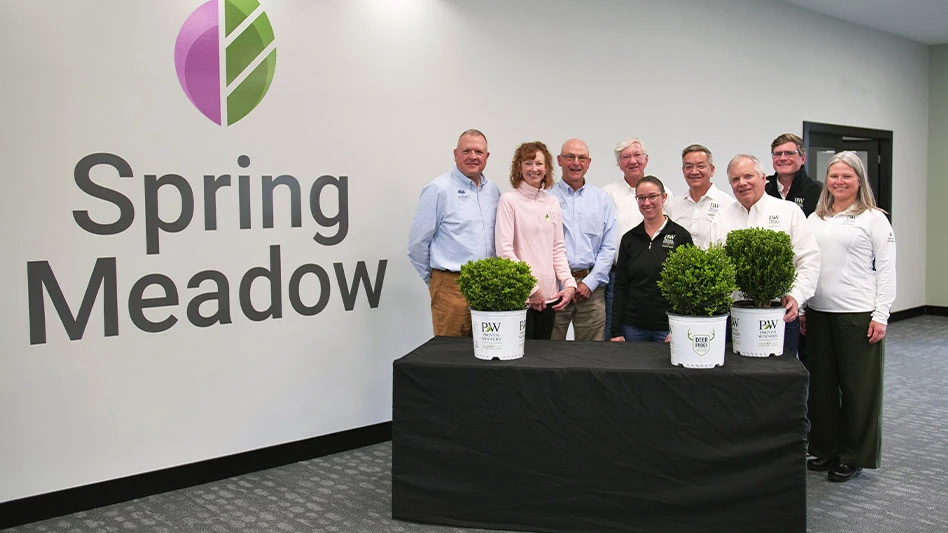 The IRS has released long-awaited expanded regulations for determining whether an expense must be capitalized because it betters or improves tangible business property or equipment; restores it; or adapts it to a new and different use. These regulations will have a significant impact on every grower that acquires, produces or improves its tangible property.
The IRS has released long-awaited expanded regulations for determining whether an expense must be capitalized because it betters or improves tangible business property or equipment; restores it; or adapts it to a new and different use. These regulations will have a significant impact on every grower that acquires, produces or improves its tangible property.
In addition to clarifying and expanding the current rules, the new regulations create “bright-line” tests for applying the repair or capitalize standards, provides guidance for accounting for, and disposing of, repaired property, as well as clarifying other aspects of the repair/capitalize dilemma.
The new regulations specify how repairs made simultaneously with improvements are to be treated, and creates a “safe harbor” for routine maintenance expenses such as materials and supplies. Because of how the new rules were issued, every nursery will feel the impact immediately.
Capitalize or repair expense
Since the Reconstruction Era Income Tax Act of 1870, taxpayers have been prohibited from deducting amounts paid for new buildings, permanent improvements or betterments made to increase the value of property. While this concept has been recognized as part of tax law almost from its inception, exactly what must be capitalized and what may be currently deducted as an expense has been at issue ever since.
According to the IRS, expenditures are currently deductible as a repair expense if they are incidental in nature and neither materially add to the value of the property nor appreciably prolong its useful life. Expenditures are also currently deductible if they are for materials and supplies consumed during the year.
On the other hand, expenses must be capitalized and written-off over a number of years if they are for permanent improvements or betterments that increase the value of the property, restore its value or use, substantially prolong its useful life, or adapt it to a new or different use.
Unfortunately, the current rules don’t clearly address even the core issue of whether expenses should be deducted currently (e.g., as repairs or as materials and supplies) or capitalized.
Repair/replace basics
Under the rules, the cost of work performed to return property to a former condition without extending its useful life is currently deductible as a repair expense, unlike capital improvements that extend its life or increase its usefulness or productivity and which must be depreciated.
Similarly the cost of incidental repairs is typically deductible. The regulations state that the cost of incidental repairs which neither materially add to the value of the property, nor appreciably prolong its life, but keep it in an ordinarily efficient condition, may be deducted as an expense.
Quite frequently, new additions are made to existing property. These additions are not replacement components nor are they repairs to property, but are instead newly installed components. These additions must be capitalized.
At other times, replacement parts or components are added. For example, a car’s engine is worn out and replaced. This replacement returns the car back to its condition prior to the deterioration of the part. It would be logical to consider this replacement as an increase in the car’s value requiring capitalization. Conversely, it would also make sense to say that by returning the car back to its prior condition, it had been repaired. Under this theory, all repairs would be deductible, no matter how substantial.
The above interpretation renders meaningless any distinction between a deductible business expense and a capital expenditure. Thus, it is often insufficient to merely look at increased value as the determining factor characterizing the replacement of a part or component. An increase in value is only one of many factors that must be considered to determine deductibility or capitalization.
Rule changes
The new regulations are the IRS’s third attempt to provide comprehensive guidance under the repair or capitalize rules. They attempt to answer such questions as how to treat environmental remediation expenses and how to treat rotatable spare parts used in repairs. One significant change allows a nursery to deduct retirement losses for building components.
If, for example, the nursery replaces the roof on a building and disposes of the old roof, it now has the option of taking a retirement loss for the old roof. The replacement must be capitalized, but at least a retirement loss can be claimed.
 If a nursery replaces the roof on a building and disposes of the old roof, it now has the option of taking a retirement loss for the old roof. If a nursery replaces the roof on a building and disposes of the old roof, it now has the option of taking a retirement loss for the old roof. |
Another change involves the “de minimis” expensing rule, a rule that allows a nursery to expense or write-off the acquisition cost of property on its books for financial reporting purposes. This immediate write-off can be used on the tax returns of any nursery with a written policy in place to do that, but only up to a threshold or ceiling. The new regulations also include many types of materials and supplies among those eligible for the de minimis expensing rule. Under earlier rules they were not eligible, or only some categories were.
As mentioned, under the new rules the costs of buying or producing materials and supplies remain deductible maintenance expenses in the year they are actually used or consumed. The cost of incidental materials and supplies, for which no record of consumption is kept, are generally deductible in the tax year in which they are paid.
While the timing rules remain the same, they provide a new definition: Materials and supplies may now be currently deducted as an expense if they are acquired to maintain, repair or improve business property owned, leased or serviced by the nursery, consist of fuel, lubricants, water and similar items that are reasonably expected to be consumed within 12 months, with an economic useful life of less than 12 months or costing less than $100.
Under an elective “de minimis” rule, amounts (other than inventory or land), along with the amounts paid for any materials and supplies don’t have to be capitalized. That is, the amounts do not have to be capitalized if the nursery has an applicable financial statement (AFS), such as one required by the Securities and Exchange Commission, or a certified audited financial statement, written accounting procedures in place for treating the amounts as expenses on its AFS and if the amounts paid and not capitalized are less than (1) 0.1 percent of gross receipts; or (2) 2 percent of the total depreciation expense as determined in its AFS.
Accounting for repairs and replacements
Every nursery should have some way of tracking the assets used in the operation as well as its repair costs on a unit-by-unit basis. Increasing repair costs can be a strong indication equipment is coming to the end of its useful life, or that the operation has a “lemon” that will continue to suck cash.
It is useful to maintain a spreadsheet listing the purchase date, identifying the equipment and then listing repair or maintenance costs, along with a brief description of the work performed.
Thanks to the new rules, the owners and operators of many nurseries are already discovering that they will have to modify how they account for expenditures, and collect the information necessary to determine whether expenditures are capital or, alternatively deductible in the year that they are incurred.
Typically, if a repair cost is not deductible in the year incurred, it would be capitalized and depreciated. If a nursery had equipment and performed a capitalizable repair on it, that additional repair cost would be capitalized and depreciated over the appropriate recovery period for tax purposes. If it’s a deducible repair cost, obviously the operation would benefit from a deduction up front in the tax year incurred.
The IRS’s new guidelines for repair-related automatic accounting method changes ensure that many growers will have to revise their thinking and their claims for a tax write-off. The IRS’s consent is often necessary before changing an accounting method for income tax purposes — even when the change is made necessary by new IRS rules.
The sheer volume of the new rules on deduction vs. capitalization of tangible property costs will obviously require professional assistance, as will instituting the accounting method changes necessary under the new rules. While it is not urgent, now might be a good time to both seek professional help and begin looking at repair and maintenance costs for 2012.
Mark Battersby is a freelance writer in Ardmore, Pa. His tax and financial features have appeared in leading business magazines and trade journals for more than 25 years.
Get curated news on YOUR industry.
Enter your email to receive our newsletters.
Explore the August 2012 Issue
Check out more from this issue and find your next story to read.
Latest from Nursery Management
- The HC Companies, Classic Home & Garden merge as Growscape
- Eason Horticultural Resources will now officially be known as EHR
- BioWorks receives EPA approval for new biological insecticide for thrips, aphids, whiteflies
- Ellen Mackenbach-Lakeman appointed new CEO of Dümmen Orange
- Southern Garden Tour sets 2025 dates for trial garden open houses
- New book explores plants that thrive in Rocky Mountains
- American Floral Endowment establishes Herman Meinders Memorial Tribute
- These companies are utilizing plastic alternatives to reduce horticultural waste






